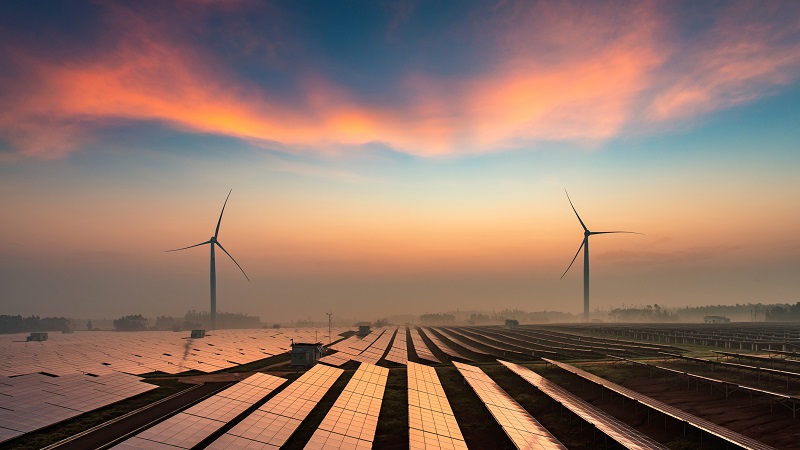Published:

Heavy cloud cover in northerly locations may not seem like ideal conditions for harvesting solar energy.
But new research led by an academic from Heriot-Watt University could challenge this view.
Dr Mehreen Gul, Assistant Professor from the School of Energy, Geoscience, Infrastructure and Society (EGIS), has received an Industrial Fellowship from the Royal Academy of Engineering (RAEng) to advance her work on double-sided solar panels, known as bifacial photovoltaic modules (BPV).
BPV technology is showing great promise for the world's rapidly growing renewable energy sector.
As compared to conventional single-sided, monofacial solar panels, BPV have a very low market share of only around five per cent.
One reason for this is that little is known about how much additional energy these cells generate with estimates ranging from 10 to 50 per cent.
BPV hold tremendous potential due to their ability to convert irradiation on both the front and rear sides. The RAEng Industrial Fellowship will take BPV testing away from controlled lab environments into real-life conditions to accurately determine their electrical energy yield.
Dr Gul explains: “Although there are only a few places on earth where this technology currently exists, we don't yet have a clear understanding of how much solar energy they capture.
“If we can determine their capacity for energy generation then it could prompt many more companies and consumers to make the switch from monofacial panels.”
A major advantage of double-sided solar panels, according to Dr Gul, is its ability to capture energy from a vertical position.
Dr Gul explains: “Typically, monofacial panels are installed at a tilt based on a location's latitude. This is not always the case for BPV as they are capable of absorbing radiation directly from the sun and on its rear face from the reflective surface they stand on.
“It could mean a lot more places around the world will look at solar as a viable energy source all year round.”
The RAEng's Industrial Fellowship award to Dr Gul will allow her to continue her collaboration with the industrial host, Wood, to carry out testing at two Heriot-Watt solar sites located at its campuses in Dubai and Edinburgh until late 2020. Each testing facility is unique and will analyse the performance of BPV in the fullest possible range of environmental conditions.
The research outcomes will underpin ongoing technology developments to ensure highly accurate prediction of performance, which is required by investors in solar projects.
Alan Mortimer, Director of Innovation at Wood, said: “BPV technology is showing great promise for the world's rapidly growing renewable energy sector.
"By validating the performance benefits of BPV in a real-world environment, Heriot-Watt University's work in collaboration with Wood will underpin multi-billion pound investments, further driving down the cost of solar energy and accelerating its contribution towards tackling global climate change.”
CLEARING NOW OPEN FOR 2019
There is no right or wrong path when starting your career.
If you want join our vibrant global community with around 29,000 other students and belong to a university whose research is transforming lives across the world, then we can help.
Our Clearing process is now open and only a phone call away.
Full details of the programmes available and instructions on how to apply can be found here.
Alternatively, you can call our Clearing helpline on 0131 322 3222 and one of our advisers will be on hand to offer advice on your next step.